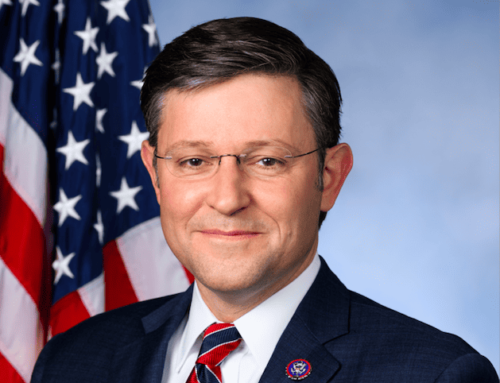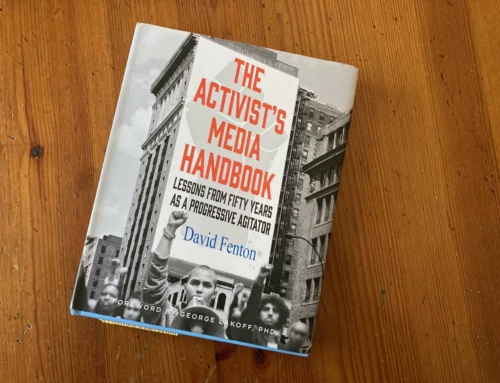There is an attack against renewable energy and the environment in this country. It is being conducted by large utilities, coal, and oil companies. The impact will affect our energy policies, manufacturing, economy, and environment for decades. It is abetted by Republican state and federal legislators that are being duped and lobbied with misinformation on renewables. It is catalyzed by contributions for reelection campaigns by these same special interests. It is coordinated by a network of conservative think tanks. Unfortunately, the public is largely unaware of this, and we will all pay an extreme price. America is for sale.
Bold statements? Perhaps. This article focuses on renewable energy but it applies to the environment as well because they are so closely connected. While renewable energy is making positive strides in this country because of clear economics, it is easy to miss the incremental creep of the fossil fuel industries on our environment and renewable energy. Yet when taken as a whole, a pattern emerges, and it is overwhelming. All one has to do is look at the sixty-seven recent environmental regulations that the Trump administration is rolling back. Or the fossil fuel appointees of the current administration. All it takes is a look at the actions by special interests and the results in states around the country.
The Simple Case for Renewable Energy
Let’s start with a question, “Why would anyone want to kill clean free renewable energy?” While the costs of oil, coal and nuclear keep going up, renewable energy is essentially free after an initial capital investment. The amount of sunshine striking the earth for one hour has the potential to power the earth for a year. The costs of solar and wind have dropped dramatically over the last ten years. Wind is now cheaper than coal in $ per kilowatt hour and solar is reaching parity with natural gas.
More than that, it is clean. “Who want’s the alternative, dirty polluting fossil fuel?” We have come to a point when the era of fossil fuels is coming to an end. Our proverbial car is in the garage with the motor running and the door closed. We have reached the limits of our atmosphere and water, and can no longer use them as garbage dumps for carbon without huge and catastrophic consequences. For example, The Guardian reports, “Artic ice melt could trigger uncontrollable climate change at global level.” Or The Independent reports, “Great Barrier Reef can no longer be saved.” Or climate change will decrease crop yields up to 50% and affect food security.
Lastly, renewable energy is now creating more jobs than fossil fuels. Solar energy jobs are growing 12 times as fast as the US economy. Let’s ask, “Who doesn’t want more jobs?” “Right now, clean energy jobs already overwhelm dirty fuels in nearly every state across America, and that growth is only going to continue as clean energy keeps getting more affordable and accessible by the day,” Sierra Club executive director, Michael Brune, said in a statement. “These facts make it clear that Donald Trump is attacking clean energy jobs purely in order to boost the profits of fossil fuel billionaires.”
Most Americans now recognize the value of renewable energy. According to a recent Pew Research poll approximately 86% of Americans want more wind and solar. This includes voters identifying themselves as conservative or right leaning. So we are not talking about the American people.
Who Stands to Benefit by Killing or Slowing Renewable Energy?
The answer is fairly simple. Those that want to kill renewable energy and roll back sensible environmental regulations are those who stand to gain the most from fossil fuels, those companies that use and sell energy generated from fossil fuels. Oil companies have tried and failed to green themselves by attempting to become energy diverse. Instead, they’ve found it cheaper to lobby and to pretend they are green through advertising and misinformation. The same for coal companies. i.e. Where did “Clean Coal” come from?
A report by The Rolling Stone, The Koch Brothers’ Dirty War on Solar Power, says, “… the birth of Solar poses a grave threat to those who profit from burning fossil fuels. And investor-owned utilities, together with Koch-brothers-funded front groups like American Legislative Exchange Council (ALEC), are mounting a fierce, rear-guard resistance at the state level – pushing rate hikes and punishing fees for homeowners who turn to solar power. Their efforts have darkened green-energy prospects in could-be solar superpowers like Arizona and Nevada. But nowhere has the solar industry been more eclipsed than in Florida, where the utilities’ powers of obstruction are unrivaled.”
The report goes on to talk about motivation for this type of action. “It should come as no surprise that the utilities have fought so hard. The rise of cheap, distributed solar power poses a disruptive – and perhaps existential – threat to the traditional electric utility business.”
Who Is Involved in the War Against Renewable Energy?
The mechanism for the efforts against renewable energy is fairly straightforward, but this belies the effectiveness and level of effort. Large private and corporate sponsors like the Koch brothers and Mercers have set up and funded private think tanks over the last thirty years. A few examples are the Institute for Energy Research (IER) and the American Energy Alliance (AIA). Both these organizations are involved in plans to kill the Clean Power Plan as well as withdraw from the Paris Accord. Their contributions and lobbying is outlined in this article by Think Progress.
Two other organizations, the Sutherland Institute and Federalism in Action have helped sponsor the attack on our national monuments in order to allow coal mining, fracking and oil drilling in these national treasures. Both are sponsored by the Kochs. They are directly responsible for the slashing of Bears Ears and Grand Staircase national monuments despite 98% positive support in comments from the public. I have posted about the threats to three other National Parks as a result of this war: Chaco, Great Sand Dunes, and the Grand Canyon.
The Investment in the War Against Renewable Energy
In support of these actions, in 2016, utilities, coal and oil companies have more than 1770 lobbyists on Capital Hill and spent $275.8 million to get over $37 billion in subsidies as well as favorable laws. Globally, this number is much higher. The IMF reports the oil industry may receive up to $5.3 trillion in subsidies globally.
Not included on the negative cost side of any equation are the hidden costs of climate change running to hundreds of billions of dollars. Consider the increased costs from recent hurricanes and California wildfires as one example.
What Renewable Energy Myths are the Fossil Fuel Industry Spreading?
There are three primary myths the fossil fuel industry is spreading about renewable energy. As with global warming, their intent is to spread doubt. When examined, their propaganda doesn’t stand up, but it doesn’t have to in order to be effective. Doubt is a cancer when the uniformed crave clarity! If there is doubt, then it’s easy to avoid responsibility and take the safe route. Old ideas die hard and the GOP tends to cling to them until the end.
The first myth is that renewable energy is too expensive. Alternatively, this is stated as renewable energy will drive up electric costs. For example, in Georgia, a Koch Brothers backed group, American’s for Prosperity (AFP), regularly puts out misinformation. As Georgia Power considered a 525 megawatt solar project, AFP claimed that states with renewable energy targets, on average, have rates that are 40% higher than those that without targets. A completely meaningless figure. There is no proof that renewable energy drives up electric rates. Even Georgia’s Tea Party challenged the smear campaign, “AFP Georgia is putting out absolutely false information,” said Debbie Dooley, a national coordinator with Georgia’s Tea Party. Ultimately, and ironically, it is cost that drives the movement toward clean energy and lower costs for renewables will spell the demise of fossil fuels.
The second myth is that renewables are not reliable. This is tied to the myth that we must have coal for consistent power. Rick Perry’s plan to subsidize coal and nuclear energy is an example of the costly consequences of this myth. Historically, renewables have been subject to variations in sun or wind, however a number of technologies are emerging that mitigate this. Not the least among them is the rise of storage technology. Another is the advent of new grid software. And finally, “Another key is to have a mix of sources spread over a wide area: solar and wind power, and geothermal sources.”
At a recent energy conference, Patrick Lee, a Vice President with Sempra Energy said, “I am speaking with confidence now. We have a solution now to adjust the intermittency of solar and wind energy that is no longer a technology challenge. Now it is an economic decision.” Indeed, Germany has achieved 85% renewable electricity production on days this year.
The third myth is that renewables can’t reach scale or possibly stated as the grid can’t handle renewable energy. All around they world, solar and wind and other sources are making an increasing contribution to our electricity needs. Simply Google any renewable energy growth curve. We are putting up a wind turbine every 2.4 hours in the US. Arguments about the grid may be truer. Our grid technology is outdated and vulnerable to cyber attack. Yet some enlightened utilities are investing and implementing smart grid technology capable of handing renewable energy.
There is a host of other misinformation from noise concerns, to bird kills, and aesthetics that get thrown out as well. It is interesting that the purveyors of this don’t mention the downsides of fossil fuels: CO2 pollution, acid rain, toxic coal ash ponds, oil spills, and so on.
Casualties from the State Front on the War on Renewable Energy
The attack on renewable energy is happening in every state. It is in all cases supported by local Republican legislators. Here’s a list of ten recent setbacks on renewable energy from around our country as a result of fossil fuel lobbying them. They are representative of a larger organized effort and are taken from a file of fifty gathered over the last six months. They fall into three categories: 1) Direct obstruction of renewable energy 2) Creating indirect barriers and 3) Subsidization of fossil fuels over renewables when they are non-competitive.
- Connecticut and Michigan pass laws to eliminate net metering. (org)
- In Georgia, the public service commission was considering a proposal for 525 megawatts of solar power. Two groups opposed it; Georgia Power, the local utility, and Americans for Prosperity (AFP), a group funded by the Koch Brothers of Koch Industries, (think petroleum) Even the Tea Party said, “AFP Georgia is putting out absolutely false information.” One of these claims was that states with renewable energy have electric rates 40% higher than states without. (Greentech Media)
- Wyoming Senate Bill 71 would charge utilities a penalty if they use wind or solar energy to provide Wyoming consumers with electricity. Why? Because Wyoming is a coal state. Please note solar will soon out compete coal around the world without the terrible environmental impacts. (Casper Star Tribune)
- Missouri lawmakers have created a bill that destroys net metering (you get what you pay for energy when you sell energy back to the utility) and requires distributed generators (read Grandmothers rooftop solar) to get liability insurance. This is despite a report by the Missouri Energy Initiative finding that net metering was a positive for all electric customers. The Missouri Public Services Commission had to be sued to prevent granting utilities requests to end solar rebates in the state. (Utility Drive)
- In Ohio, a series of bills sponsored by Republicans seek to limit clean energy. (Ohio Environmental Council Action Fund)
- Prodded in part by the utilities’ campaign, nearly every state in the country is engaged in a review of its solar energy Since 2013, Hawaii, Nevada, Arizona, Maine and Indiana have decided to phase out net metering, crippling programs that spurred explosive growth in the rooftop solar market. (Nevada recently reversed its decision.) (New York Times)
- The Oklahoma House of Representatives on March 9 passed by a vote of 74-24 a bill that would reduce the time frame in which wind power projects can qualify for the state’s clean energy tax credit. (Renewable Energy World)
- The North Dakota state senate is considering a bill that would put a two-year moratorium on new wind development, a proposal that critics say unfairly targets the industry and renewable energy. (Bismarck Tribune)
- In Maine, the republican governor threatens to roll back financial incentives for those who install rooftop solar panels in 2018 or later. (org)
- In New Hampshire, two republican sponsored bills in New Hampshire would see the state exit a regional cap-and-trade system and end its renewable energy mandate. (Portland Press Herald)
What’s Not Working.
The environment is now more a polarizing topic than abortion or gun control. It doesn’t have to be. The environment and renewable energy are different sides of the same coin. Renewable energy allows us to lower our carbon footprint and pollute less.
There are some who believe that all renewable energy proponents or environmental groups have to do is get rank and file conservatives to see the issues from their perspective, i.e. say the right magic words and conservatives will see the truth.
Liberals and progressives believe in the myth of reason, that facts matter (they do at the right time), and that reason will prevail. But let’s take a look at two recent occurrences. First, 16,000 scientists just wrote a “Letter to Humanity” about the consequences of not addressing the climate crisis. Is anybody paying attention? Only the converted. Second, the Trump Administration just sent a delegation of fossil fuel promoters to the Bonn COP23 climate conference. That’s a little like sending the tobacco industry to a cancer prevention conference. What’s the result? Absurd as this act seems, it gets news coverage. It plays on Fox and is written about in Brietbart. The Trump base cheers. Conservatives aren’t listening to both sides of the argument (and irony is wasted on the right.)
Most communication experts believe using facts to convince those who disagree is a waste of time and only re-enforces entrenched positions. The use of fear captures attention but also leads to apathy. Progressives, environmentalists and renewable energy proponents are continually falling into this trap.
But what if trying to persuade conservatives is the wrong approach? Did Dr. Martin Luther King try to persuade racist segregationists that they were wrong? No, he tried to persuade all of us that we all benefit from equal rights. The idea of persuading even one in ten conservatives seems daunting. We don’t have the time, the energy, the coordination to do this. That begs the question, what, if anything, will?
How are Republicans Influenced and why are the Influencers Successful?
Here it’s important to differentiate between Conservative and Republican leaders and those who are rank and file.
What Trump, and increasingly, the oil-sponsored right, realize is that politics flows, not from the voters upward, but from politicians and leaders downward. “Assessments of science follow political opinion; they do not precede them,” says Megan Mullin of NYU. Public and voter opinion is guided by signals from their elite. For example, what people read in the newspapers, see on Fox, hear their politicians discussing, see Tea Party activists protesting, and watch conservative talking heads repeating their points ad nauseum. That’s why conservatives are more successful. These conservative elites are funded by the fossil fuel industry. Their think tanks create the issue, then look at the values that support them, create moral indignation, and finally blast it out into the media sphere with relentless consistency and unending repetition. Witness the move to support coal or even the use of the term clean coal.
Unfortunately, no one has figured out how to keep conservative elites from lying to their base about climate change or spreading renewable energy myths. Again, they are well funded by the fossil fuel industry.
Why Do Republicans Hate Renewable Energy and the Environment?
Republicans don’t hate renewable energy per se. They are confused about climate change and the environment. They simply vote and believe in their political identity. Facts don’t matter. They follow their media elite. Their media elite is bought and paid for by fossil fuel interests. Fossil fuel interests are at risk due to renewable energy. So anything that will slow or kill renewable energy is fair game. Misinformation and doubt are their weapons.
What Can Be Done to Counter the Actions of the Fossil Fuel Industry and Promote Renewable Energy?
- Counter-Lobbying
The fossil fuel lobby is immense both in terms of numbers of lobbyists and the amount of money they can throw at legislators. The environmental movement and renewable energy pale by comparison. There is one lobbying organization that is trying to reach legislators both locally and federally. It is the Citizens Climate Lobby (CCL) Its chief task is focusing on a carbon fee and dividend. The idea is simple. Impose a fee on carbon that will incentivize renewable energy and then return that fee directly to the consumer of energy. The idea is opposed by the AFP and other fossil fuel organizations and its adoption may be a huge task. One suggestion is to get them to carry one additional message to legislators, though this is beyond their founder’s charter. That message is the truth behind renewable energy as part of an overall energy strategy.
- Messaging Development
While the environmental movement has many participant organizations, their messaging is fragmented and most often very issue specific. It is difficult to combat climate change and promote renewable energy when your primary focus is to “Save the Beavers.” Yet it may be difficult to “Save the Beavers” if the climate changes drastically. Climate is at the root of most environmental and renewable organizations. Messaging in these organizations is often reactive instead of pro-active. It may also miss the professional positioning and touch that makes the message resonate with wide audiences. Often it is simply fear-based and designed to help raise funding.
Renewable energy and environmental groups need their own think tanks and media organizations to help craft effective messages. The Climate Advocacy Lab is one such organization, but there is a huge gap between theory and practice in this area. More is needed.
One key tenant for effective messaging is that it has to be based on values rather than identity. Today, few can articulate the values of the environmental or renewable movements. This is another gap.
- Coordination of Messaging Across and Between Renewable or Environmental Organizations
When the fossil fuel industry launches the “Energy Dominance” campaign or “National Thank Fossil Fuels Day,” their coordination is exceptional. Within days, every news media outlet and politician is singing from the same hymnal. Who is there to help coordinate the response among renewable energy and environmental groups? No one. So as a result these ideas seep in to our collective subconscious.
If there were a consistent and clear message, the renewable energy and environmental movements need a rapid response coordinating committee like the Student Non-Violent Coordinating Committee of the Civil Rights Movement.
- Voting, Marching, Blockading and More
Renewable energy is in a fight. It’s not a debate. And if it’s a fight, what do we remember from the Blitzkrieg to General Norman Schwarzkopf Jr in the Gulf War? It’s overwhelming force that wins. Most shifts in political policy have been a matter of one side overwhelming the other. For example, when Walter Cronkite (a media elite) turned against the war in Vietnam, and there were also millions marching in the streets. So maybe the energy should be spent on moving the concerned and the middle to more action rather than persuading conservatives.
Perhaps this is what is happening in the “Resist” movement. But resistance is a tactic and not a strategy. The nature of the word is that we are against something as opposed to “for something.” Rather, we should be talking about our values and the connection of millions of Americans to them. We should be talking more about renewable energy as a champion of our values of Independence, Freedom, Hard Work, and so on.
In the long run, environmentalists and renewable energy advocates are the right side of history. The facts are there. The climate is changing. Renewable energy is cleaner, cheaper and more competitive than fossil fuels. We will win. The question is will we win soon enough by trying to reach consensus? What will be left of our “winnings”?
Perhaps it’s time to claim and own the issue of the climate and renewable energy rather than trying to defend it and persuade conservatives. Here are a couple of other things we could do.
- Stop trying to argue climate science with deniers. This is a waste of time. Instead focus on renewable energy. Renewable energy is more agnostic than climate change.
- Focus on getting action out of those that are convinced or concerned about climate but not yet active. Perhaps there is room to include those in the middle as well. Nathaniel Stinnett’s The Environmental Voter Project is one example.
- Change the tenor of the message. What if we painted conservative legislative supporters as the fossil fuel puppets that there are? Let’s point out the fact that conservatives have been misled, manipulated and lied to. Let’s use shame. Mo Brooks (R-AL) just alluded that rocks falling into the sea cause sea level rise. The American people are not stupid. They know BS when they hear it. Blame those who promote the BS rather than those who are subject to it.
- Let us point out that they are not deniers, but deceivers, and those that follow them are deceived. Then let’s offer them a path. Renewable energy.
- Increase the intensity of the fight. Let’s do it loudly, consistently, pervasively and with the moral indignation that it deserves. Let’s get as many of our friends involved as we can, rather than convert the deceived.
I am struck by the image of Dr. Martin Luther King and the civil rights movement. I don’t believe he was successful reasoning with racists. While he believed in non-violence, he was a warrior as well.
We are all connected. Savor the earth.
Hobie,
L. Hobart Stocking
SkyWaterEarth.com
hobart@skywaterearth.com
651-357-0110
Facebook: @SkyWaterEarthConnected
Twitter: @SkyWaterEarth








Leave A Comment